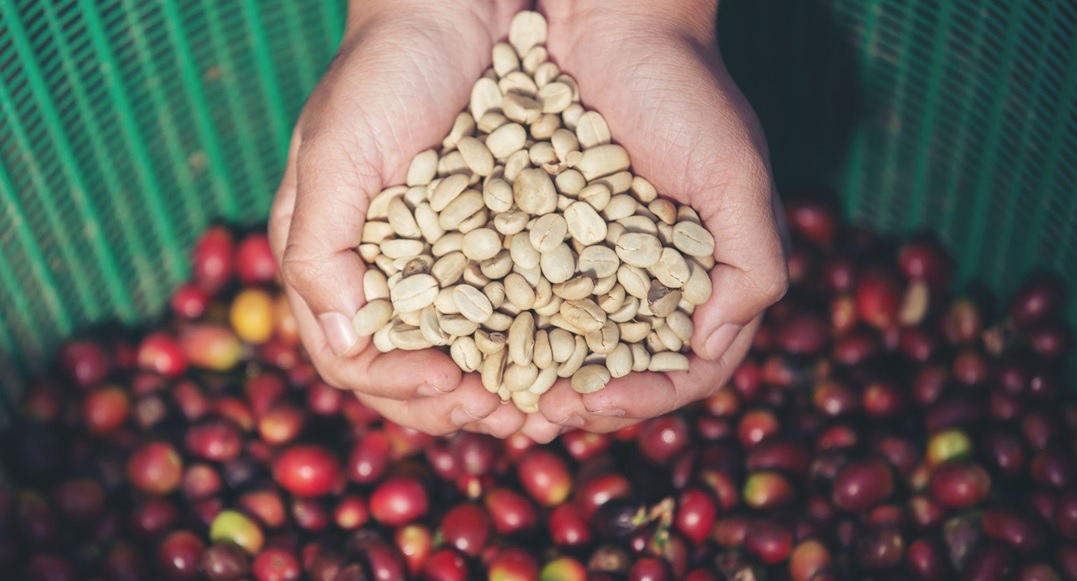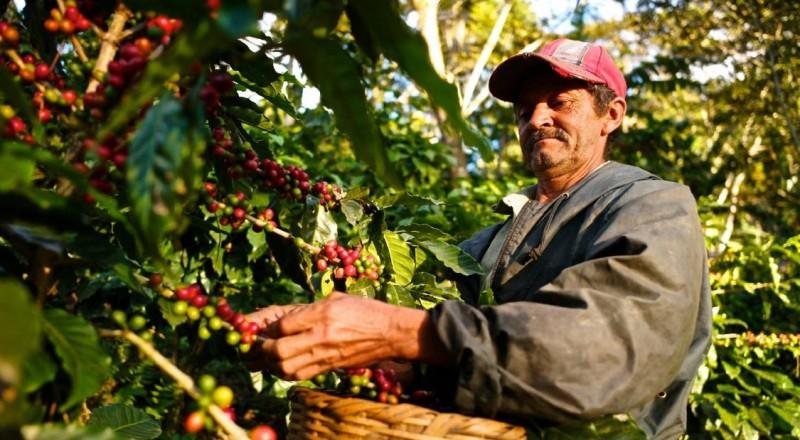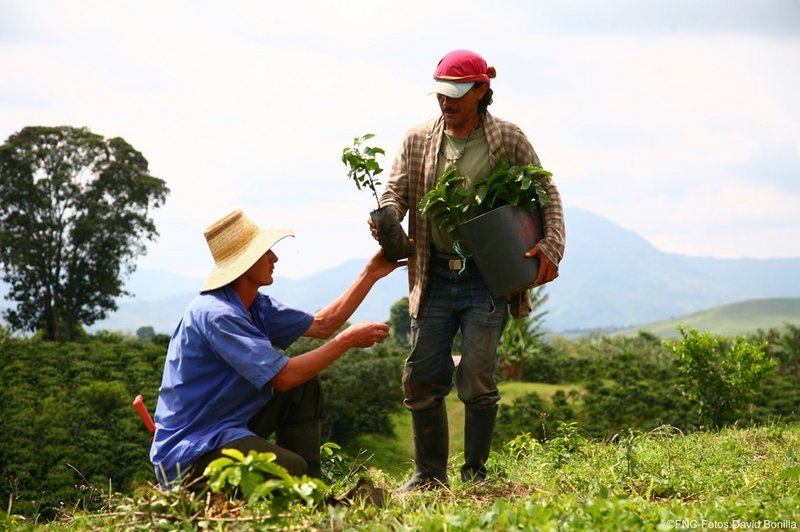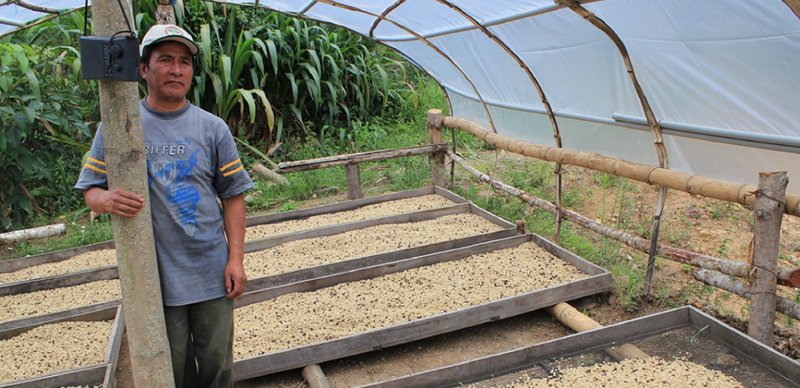25 de Aug 2021 | Coffee
Green Coffee Summit 2021
The coffee market is constantly adapting. The pandemic has shown a competitive supply chain and in the specialty segment there are risks and challenges to solve.

Jorge Cuevas (director of Sustainable Harvest Coffee Importers) was presented at the Green Coffee Summit event organized by the Specialty Coffee Association (SCA), where he affirmed that the world of coffee is undergoing unprecedented changes. Logistics costs have increased due to restrictions due to COVID-19. The frosts in Brazil, an event that has not taken place for 27 years, have been affecting the large producing country, although they are also an opportunity for others to make investments in its business model, being favored by high prices, which he considers to remain that way for a considerable time.
On the other hand, the expert affirmed that despite the fact that the economy has had ups and downs, coffee consumption has not been greatly affected, since sales have been maintained through new channels and the new formats of the product that were developed, successfully adapt to new styles of coffee drinking.
In this context, it’s still very difficult to make projections and give clarity to the actors. Therefore, coffee growers still have questions related to economic uncertainty: What will happen in the world? What will happen to my production? Will they keep buying my coffee? Will the coffee I produce continue to be relevant in the market? What should I do in this scenario?
Faced with this uncertainty, technology can increase access to data to answer these questions, but they will not necessarily find valuable information to make decisions. The Peruvian Chamber of Coffee and Cocoa is a serious institution that makes the effort to synthesize the information to which it has access through its reliable national and international networks.

Source: Agraria.pe
The six risks that the coffee growers must face
The risks to which coffee growers are exposed are mainly six: productivity and quality, physical security, performance of administrative management, climate change, governance and price volatility. To cope with them successfully, it is recommended that you understand risk through the collection of data and information in your organization. So they have support to implement their risk mitigation strategies. For example, to mitigate the risk of price changes it is recommended to: evaluate the harvest, project, carry out the market analysis, prepare a hedging strategy and implement together with a ?nancial hedging strategy.
Not all producers are the same, most coffee growers have fewer resources to face risks in producing countries, and require the promotion of State programs or international cooperations, which provide alternative sales channels such as direct trade and auctions. On the internet, there is also an educational package that includes: mechanisms to distribute the investment risk, evaluation of the international price scenario, operations and inventory management, logistics, marketing strategies and governance. This gives coffee growers a foundation on which they can build their decision-making capabilities to add value to their organization.
Today, the great challenge is to standardize this knowledge, involve them more in technology to digitize the data of your organization and achieve agility in a market that is increasingly competitive. Likewise, the programs that are designed must be speci?c according to the initial starting point of the coffee grower. These can be of one level: basic, intermediate or advanced. Thus, your know-how needs are better served. Productivity and quality gaps in production affect the consistency of the coffee supply, affecting the country's supply.
Resilient coffee growing
Climate change threatens more than 500 million families, including 25 million coffee growers who depend on agriculture, and only 4% of the investment is allocated to mitigating this risk. Today more than ever, coffee growers need climate resilience, that is, to be READI: know their risks, have expertise in climate solutions, the ability to reach other producers, data to inform action and investments to take action.
Being READI will mitigate their vulnerability, which can be de?ned as: exposure to climate change + sensitivity to risks - capacity to adapt. According to this equation, its exposure can be categorized in the short and long term, in order to then design the best technical solutions, accompanied by organizational plans and according to its location.

Source: FNC Fotos - David Bonilla
Then, they will be able to have resilience, that is, the set of capacities and conditions that allow them, their organization and the value chain to which they belong to respond to the crisis. This resilience is strengthened when three other pillars are added to climate action: access to credit, gender inclusion, and youth employment. The latter are the catalysts for innovation in the chain, who will give way to its evolution.
The impact of direct trade on the life of the coffee grower
Since 2013, Stumptown, an international high-quality coffee roaster, has purchased the caturra, bourbon, pache, maragogype and typica coffee varieties directly from Peruvian producers, which are produced between 1600 and 1700 meters above sea level in Rodriguez de Mendoza, Amazonas. Since 2014, it has also bought the same varieties produced between 1,400 and 1,550 meters above sea level in Chirinos, Cajamarca.
Its working principles are: knowing the producers, paying prices according to quality, and building long-term relationships. For the latter to be sustainable in the changing environment, it always monitors the impact indicators: income per hectare at the field level, productivity, social participation in the supply chain, and percentage of children from producer families enrolled in schools.
It should be noted that cultivating a long-term relationship makes the producer's coffee position itself in the market with its familiar name, providing con?dence to the international buyer.
Innovation
High-end producers, roasters and bars have a need to differentiate themselves. In the high-quality coffee industry this means producing something with unique, attractive and exotic value. For most producers, processes to obtain a different ?avor are the best alternative, however, this must go hand in hand with standardized procedures. That gives credibility and con?dence to the international buyer, since this new knowledge has technical and legal implications. They are generally asked, what does process X mean? Did they add any strange ingredients to it? Will my consumers like it? What will be the shelf life of the coffee?

Eber Tocto, coffee grower from Cajamarca. Sourcee: Stumptown Coffee
To operate in a high-quality coffee supply chain, it is recommended that producers know the attributes of their coffee, communicate them clearly and target markets that value them. Likewise, they must de?ne with the buyer the risk (technical and ?nancial) that each party will assume with the introduction of a new process. The challenge is how to maintain a feedback loop so that the bene?ts of differentiation are spread from producers to roasters, even specialty coffee shops.
The coffee that comes from this offer coexists with the coffee that is considered generic or conventional. This last product represents the trend that the industry has, both soluble and ground, and although the trend has been to standardize at a low cost, today quality and sustainability are extended as a common factor in all markets, stimulating innovation that serves the different market segments.
Thus concluded the session of the Green Coffee Summit 2021, noting that different formats of coffee, different supply chains, actors with different interests can coexist in the market... The important thing to overcome the crisis is transparency among the members of a group, the expectations of both parties are made explicit, the real capacities to ful?ll them, the gaps to be covered, and the risks to share are communicated. This is aligned with the strategic guidelines for the promotion of coffee in the foreign market, which the Peruvian Chamber of Coffee and Cocoa has prepared in coordination with the Swiss Cooperation, and within the framework of the Alliance for Sustainable and Competitive Coffee Project.
________________________________________________________________
Panelists: